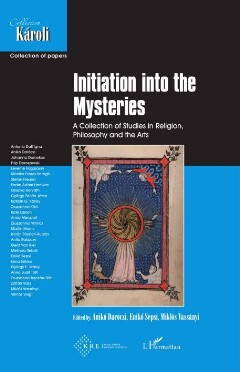Seite 131 [131]
WORDING THE SILENCE: INITIATORY READING OF MYSTICAL TEXTS
in which the sensual images are raised to a more abstract level by means of
spatial images — here, as often when suggesting the ineffability of the union,
described as ‘divine nature flowing through them both’. The nature of the
unio is on the one hand suggested through images of sensory experience and
of spatiality (depth) and fluidity (flowing), and on the other hand emerges in
the litany-like, repetitive structures connected by ende — the latter not only
as a conjunction (and) but also echoed in the gerund vioyende (flowing) and
bliuende (remaining), suggesting, through the sound, this flow.
SEEING AND FEELING THE INVISIBLE
The introductory paragraph of Letter 22 refers to a non-speculative knowledge
of God. This is given to persons who lose themselves and become one with
Him. Hadewijch makes it clear that the knowledge of God — of who He is
‘in his Name and his Being’ (name, wesen), is only possible if one is ‘completely
His’ (hi moet gode al gheheel sijn) by being ‘wholly His’ (...dat hi hem al is),
and this being wholly His is only possible if a person surrenders herself, loses
herself (sonder hem seluen, verliese hem seluen, 1-8).
Hadewijch then responds, in two stages, to the statement by Augustine
which she translates as: ‘anyone who knows little, can say little’ (die luttel
weet, hi mach luttel segghen). Her knowledge of God is limited and therefore
she is able to say only little about Him. This inability to speak of God is
generally true of all human beings: ‘one cannot show God by means of human
understanding’ (men mach gode niet toenen met menschen sinnen, 13-14).
But there is another type of knowledge of God that is part of the experience
of being touched by God. Someone who receives this grace ‘might be able to
show something of Him’ (hi soudere yet af moghen toenen, 15). Enlightened
reason (verlichte redene) shows ‘a little of God to the inward-turned faculties’
(den inneghen sinnen een lettel van gode). Note that Hadewijch uses the word
‘show’ (toenen) in both cases.
Hadewijch clearly sets out one of her key themes, in which two important
points come together. She understands how far the human capacity for
understanding — and thus for speaking — falls short when it comes to God:
‘Ican disentangle a little bit ofthe riddle He is’ (een cleyne gheraetsel maghic
van hem gheraden). She assumes that as a person whose soul has been
touched (gherenen) by God, she should be able to show something about God
to those who ‘understand with the soul’ (diet metter zielen verstonden). This
also implies, in the light of the first paragraph of the letter, that only a person
who is touched by God can lose herself. Because these two aspects of mystical
ineffability go hand in hand, the result is a tension between ‘not being able
to’ and ‘yet doing’; this is the fundamental paradox in the linguistic craft of
+ 129 +
Daréczi-Sepsi-Vassänyi_Initiation_155x240.indb 129 6 2020. 06.15. 11:04:17

